How can I get the functionality of CONNECT BY PRIOR of Oracle in SQL Server 2000/2005/2008?
-
Since you seem to want more details, you'll have to tell us some table structure data and what you're trying to do. If you have an existing Oracle query, that'd be a good start.... – Mark Brackett Jun 06 '09 at 16:03
-
2@John, see the URL I posted in my answer, http://www.ibm.com/developerworks/db2/library/techarticle/dm-0510rielau/ -- it shows how CONNECT BY PRIOR works (a nice but Oracle-proprietary syntax for getting tree structures) and how to get the same effect with (recursive) common table expressions, that is, the WITH keyword (which is a SQL standard and implemented in IBM DB2, Microsoft SQL Server, and the open-source PostgreSQL engine in release 8.4). – Alex Martelli Jun 06 '09 at 23:23
-
@Alex: thanks, I saw your post and read the article. Pretty nice article, and I can see why Oracle users might like the Oracle syntax. I prefer the standard syntax, as it's more general. – John Saunders Jun 06 '09 at 23:44
3 Answers
The SQL standard way to implement recursive queries, as implemented e.g. by IBM DB2 and SQL Server, is the WITH clause. See this article for one example of translating a CONNECT BY into a WITH (technically a recursive CTE) -- the example is for DB2 but I believe it will work on SQL Server as well.
Edit: apparently the original querant requires a specific example, here's one from the IBM site whose URL I already gave. Given a table:
CREATE TABLE emp(empid INTEGER NOT NULL PRIMARY KEY,
name VARCHAR(10),
salary DECIMAL(9, 2),
mgrid INTEGER);
where mgrid references an employee's manager's empid, the task is, get the names of everybody who reports directly or indirectly to Joan. In Oracle, that's a simple CONNECT:
SELECT name
FROM emp
START WITH name = 'Joan'
CONNECT BY PRIOR empid = mgrid
In SQL Server, IBM DB2, or PostgreSQL 8.4 (as well as in the SQL standard, for what that's worth;-), the perfectly equivalent solution is instead a recursive query (more complex syntax, but, actually, even more power and flexibility):
WITH n(empid, name) AS
(SELECT empid, name
FROM emp
WHERE name = 'Joan'
UNION ALL
SELECT nplus1.empid, nplus1.name
FROM emp as nplus1, n
WHERE n.empid = nplus1.mgrid)
SELECT name FROM n
Oracle's START WITH clause becomes the first nested SELECT, the base case of the recursion, to be UNIONed with the recursive part which is just another SELECT.
SQL Server's specific flavor of WITH is of course documented on MSDN, which also gives guidelines and limitations for using this keyword, as well as several examples.
- 854,459
- 170
- 1,222
- 1,395
-
1Please explain with an example. E.g. Take some countries and states Like India --State1 -- State2 Australia --AusState1 --AusStae2 I am looking for the exact query – priyanka.sarkar Jun 06 '09 at 14:47
-
**F** section at [this url](https://learn.microsoft.com/en-us/sql/t-sql/queries/with-common-table-expression-transact-sql) was what I was looking for. – Adil Mammadov Nov 19 '17 at 09:35
-
@Alex Martelli's answer is great!
But it work only for one element at time (WHERE name = 'Joan')
If you take out the WHERE clause, the query will return all the root rows together...
I changed a little bit for my situation, so it can show the entire tree for a table.
table definition:
CREATE TABLE [dbo].[mar_categories] (
[category] int IDENTITY(1,1) NOT NULL,
[name] varchar(50) NOT NULL,
[level] int NOT NULL,
[action] int NOT NULL,
[parent] int NULL,
CONSTRAINT [XPK_mar_categories] PRIMARY KEY([category])
)
(level is literally the level of a category 0: root, 1: first level after root, ...)
and the query:
WITH n(category, name, level, parent, concatenador) AS
(
SELECT category, name, level, parent, '('+CONVERT(VARCHAR (MAX), category)+' - '+CONVERT(VARCHAR (MAX), level)+')' as concatenador
FROM mar_categories
WHERE parent is null
UNION ALL
SELECT m.category, m.name, m.level, m.parent, n.concatenador+' * ('+CONVERT (VARCHAR (MAX), case when ISNULL(m.parent, 0) = 0 then 0 else m.category END)+' - '+CONVERT(VARCHAR (MAX), m.level)+')' as concatenador
FROM mar_categories as m, n
WHERE n.category = m.parent
)
SELECT distinct * FROM n ORDER BY concatenador asc
(You don't need to concatenate the level field, I did just to make more readable)
the answer for this query should be something like:

I hope it helps someone!
now, I'm wondering how to do this on MySQL... ^^
- 1,740
- 4
- 30
- 54
-
i had a weird issue adapting your code, with an non-the same data types on the delimiter and recursive column.... but it sorted out, just with defining the first one length explicitly.... thanks for the help! – Pablo Contreras Jul 23 '14 at 00:51
-
1Is it possible to avoid path building from string (`concatenador`) for get tree like structure (so each sub-leaf values grouped together without holes by another elements)? Oracle `connect by` build in such way for free. – gavenkoa Apr 22 '15 at 14:53
-
I don't get it, isn't the whole point of a `connect by` query for it to provide the `level` and not you. – Superdooperhero Mar 07 '20 at 18:55
-
@Superdooperhero As I comment on my answer: "(You don't need to concatenate the level field, I did just to make more readable)" – Vinicius Garcia Mar 09 '20 at 02:52
I haven't used connect by prior, but a quick search shows it's used for tree structures. In SQL Server, you use common table expressions to get similar functionality.
- 399,467
- 113
- 570
- 794
-
7Please explain with an example. E.g. Take some countries and states Like India --State1 -- State2 Australia --AusState1 --AusStae2 – priyanka.sarkar Jun 06 '09 at 14:48